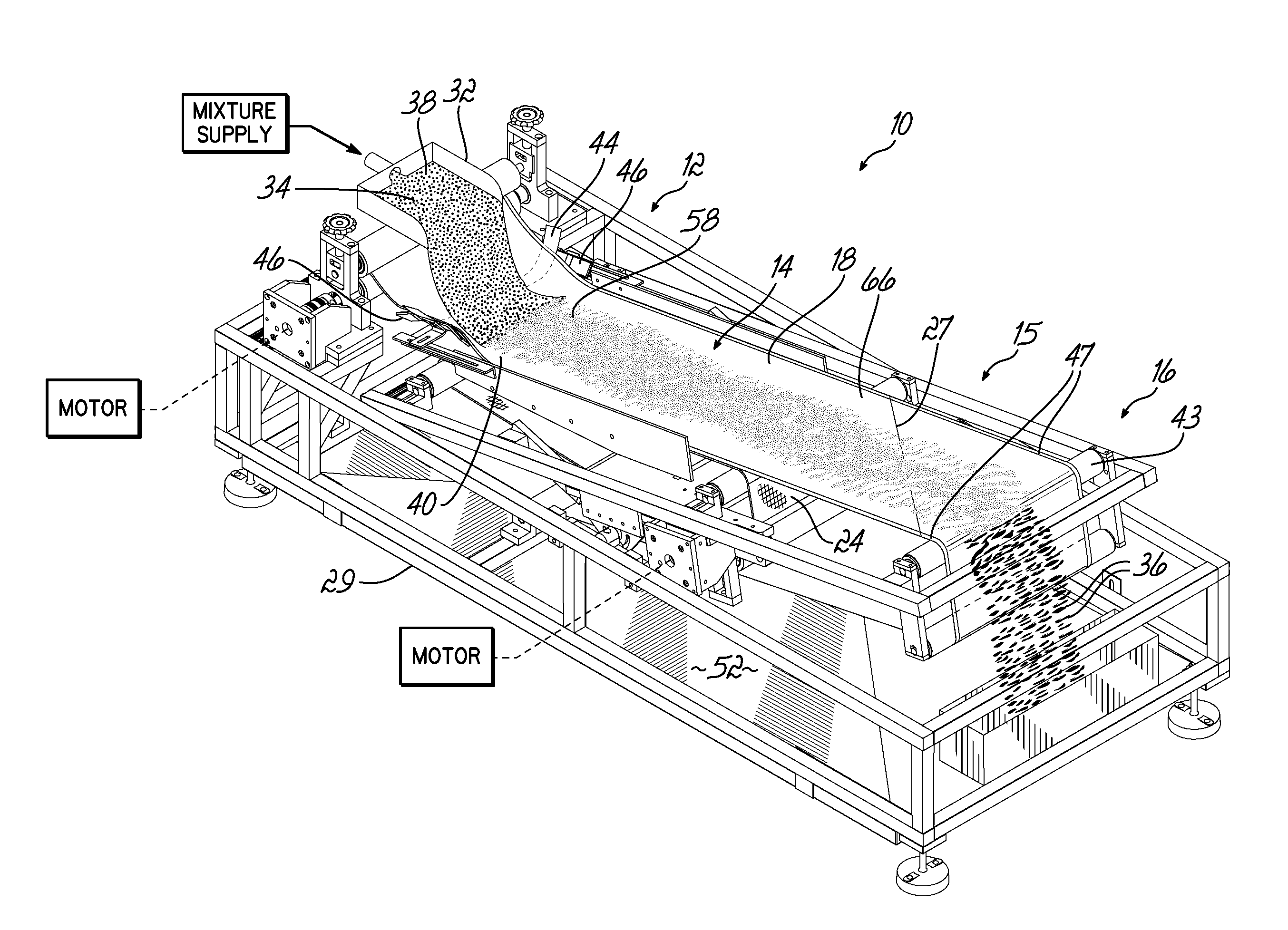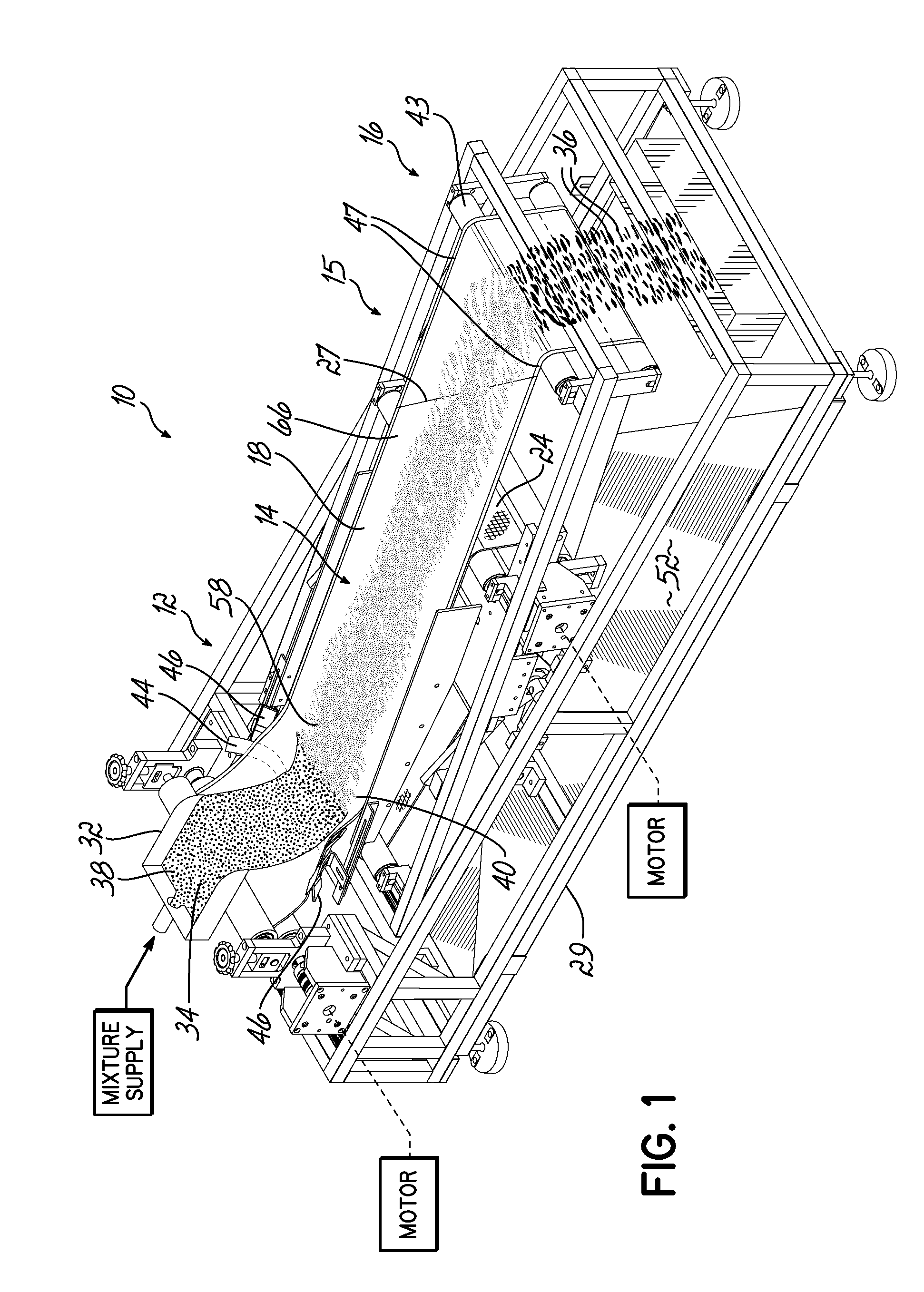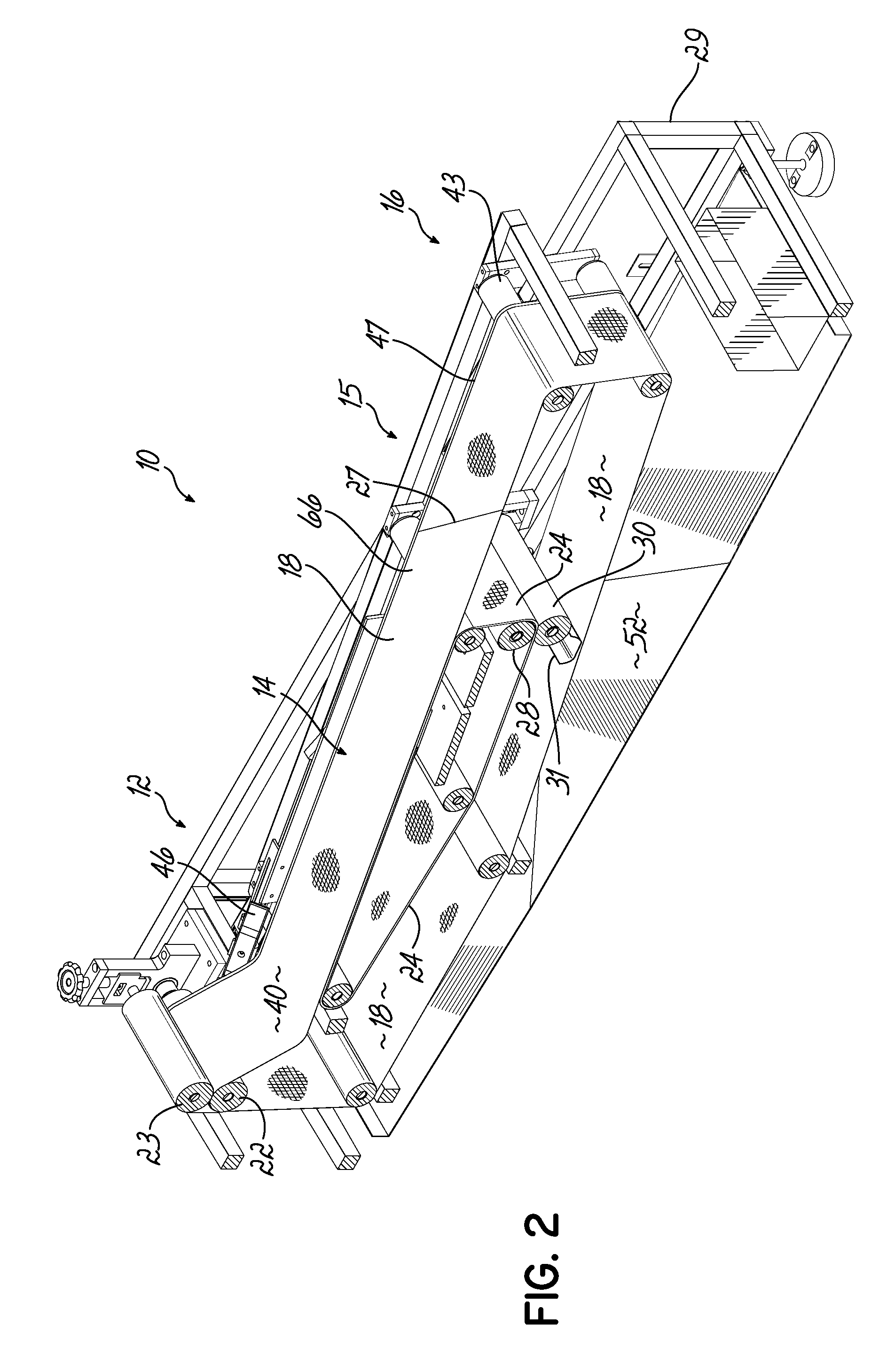Method and apparatus for separating particles from a liquid
a technology of liquid particles and separation methods, applied in the field of liquid particles separation devices and methods, can solve the problems of affecting productivity, requiring substantial energy input, indirect disadvantages, etc., and achieve the effects of facilitating separation of particulate matter, low energy expenditure, and reducing indirect disadvantages
- Summary
- Abstract
- Description
- Claims
- Application Information
AI Technical Summary
Benefits of technology
Problems solved by technology
Method used
Image
Examples
example
[0034]The following example illustrates the practice of one embodiment of the invention using the device to dewater a particular strain of algae. Other embodiments within the scope of the claims herein will be apparent to one of skill in the art based on the disclosure herein.
[0035]The device was configured with a continuous filter made of Polyester monofilament material (product number PES25 / 20) from SaatiTech, Somers, N.Y., having a pore size (also known as a mesh opening) of 25 microns and an open area of 20%. Thickness of the filter was 52 microns, and the individual thread diameter for preparing the filter material was 27 microns. Beneath the filter belt was a continuous belt of airlaid nonwoven absorbent material, No. NF 52-230 made by Hagulan Vliesstoff GmbH & Co. KG, Fulda, Germany. This belt was made of 80% viscose and 20% polyethylene. The structural integrity of the absorbent belt was increased by sewing a webbing of a fiberglass window screen material to the underside. B...
PUM
| Property | Measurement | Unit |
|---|---|---|
| thickness | aaaaa | aaaaa |
| concentrations | aaaaa | aaaaa |
| concentration | aaaaa | aaaaa |
Abstract
Description
Claims
Application Information
 Login to View More
Login to View More - R&D
- Intellectual Property
- Life Sciences
- Materials
- Tech Scout
- Unparalleled Data Quality
- Higher Quality Content
- 60% Fewer Hallucinations
Browse by: Latest US Patents, China's latest patents, Technical Efficacy Thesaurus, Application Domain, Technology Topic, Popular Technical Reports.
© 2025 PatSnap. All rights reserved.Legal|Privacy policy|Modern Slavery Act Transparency Statement|Sitemap|About US| Contact US: help@patsnap.com



